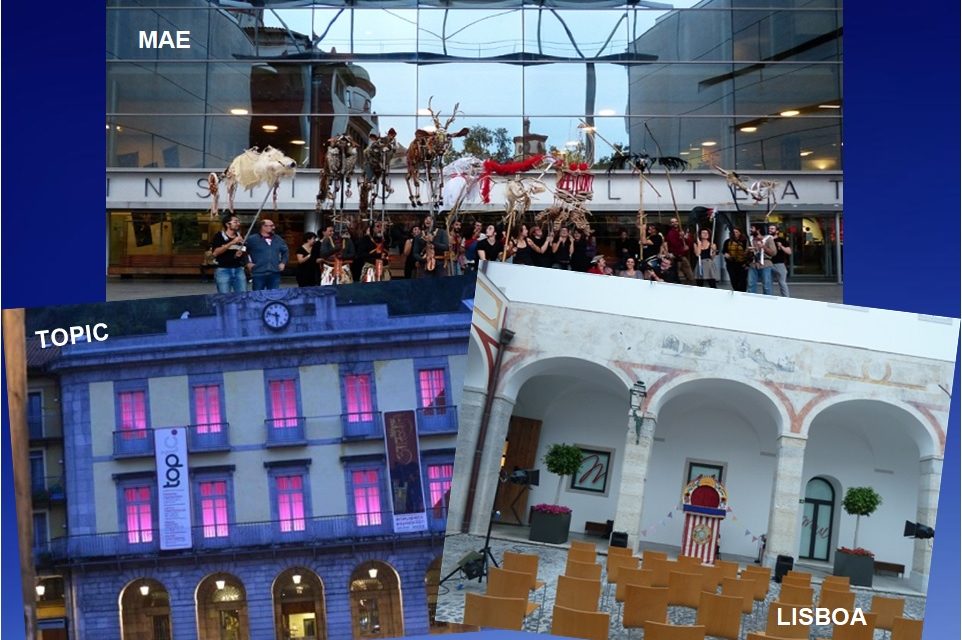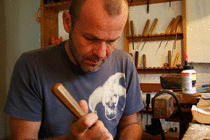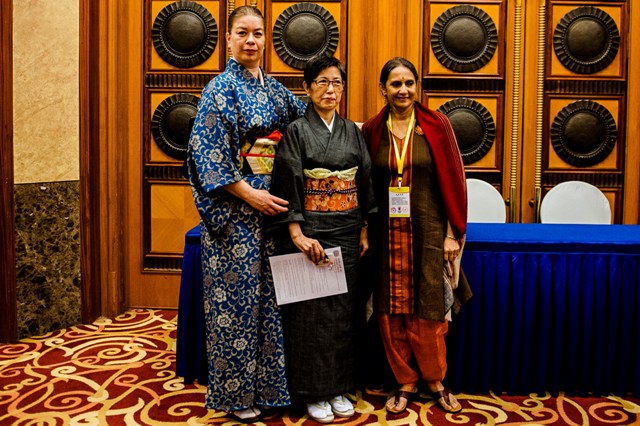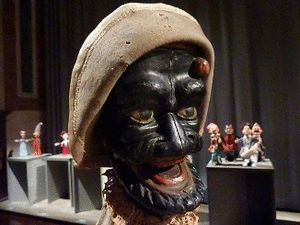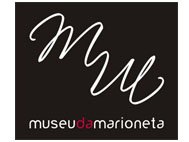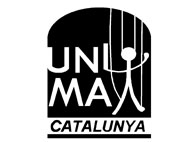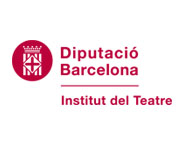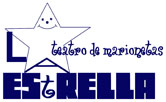A recent visit to the Lisbon Puppet Museum leads us to reflect on the importance of museums. Puppetring collaborates closely with the Lisbon Puppet Museum (Museu da Marioneta de Lisboa) (see here), the Tolosa Museum TOPIC (see here) and Barcelona’s MAE (Museu de les Arts Escèniques) (see here), unarguably the best established puppet museums in Spain and Portugal.
 Roberto by Manuel Rosado. Museu da Marioneta de Lisboa.
Roberto by Manuel Rosado. Museu da Marioneta de Lisboa.
In addition, without going beyond the Iberian Peninsula, various museum endeavours create a map of significant exhibition spaces in the field of puppetry, together with the above mentioned three. In Porto, the Museu de Marionetas do Porto (created by João Paulo Cardoso and open to collaboration with the Lisbon museum); in Asturias, the Museo-Taller de Pola de Siero sensitively directed by Joaquín Hernández (see here) in association with the company Tragaluz; in Abizanda, in the region of Aragon, Museo de la Casa de los Títeres de Abizanda, created by the company Los Titiriteros de Binéfar (see here); the Museo-Colección Francisco Peralta de Segovia, situated in a beautiful tower in the old city walls and dedicated to the late master puppeteer from Cadiz (see here); the Museo del Títere de Cádiz, located in an impressive site in the old city walls close to the port, and which eagerly awaits the arrival of the rich legacy of the Tía Norica Theatre (see here); the Museo Galego da Marioneta, founded by the company Viravolta en Lalín, where the legacy of the Sirvent family with the theatre of Barriga Verde is displayed (see here); and, in Valencia, the Museu Internacional de Titelles de la Vall de Albaida, created by the Bambalina company, owners of a very interesting collection. (see here).
This encouraging and stimulating panorama demonstrates the remarkable growth of puppet theatre in Spain and Portugal in recent decades
 Anna Valls, director of MAE Barcelona.
Anna Valls, director of MAE Barcelona.
Many different reasons justify, and breathe life into, these museums. Without doubt, one of the principle causes is the ever increasing demand for a destination for the most important pieces from collections of professional companies, when they wish to cede or donate them. Puppetry in Spain and Portugal, following the renewal of working companies and audience interest since the 1970s, has generated a patrimony that deserves to be saved, interpreted and displayed in permanent and temporary exhibitions, imparting knowledge about how popular and learned imagination has regarded reality from the point of view of visual theatre.
 Façade of the Museo del Títere, Cádiz.
Façade of the Museo del Títere, Cádiz.
At the same time to display, face-to-face, the historic, local and world legacy —one of the principle concerns of puppet theatres— with modern, contemporary figures of the art of puppetry is enormously useful for both professionals and public. It is worth pointing out that while the actors’ theatre has only videos, texts and stage remnants (costumes, masks, sets…) by which to observe itself, in puppetry and other figure theatre, when it comes to self-observation, we have the characters themselves: the puppets and marionettes. Self-observation, for learning about and reflecting on uses, techniques and dramaturgical methods. And, of course, the preservation of the pieces is not justified only by their theatrical and sociological value but also for their aesthetic qualities.
 Joaquín Hernández with one of the puppets from the Casa-Taller de Títeres de Pola de Siero.
Joaquín Hernández with one of the puppets from the Casa-Taller de Títeres de Pola de Siero.
All the museums mentioned fulfil the function of holding patrimony of recent or, even, active puppeteers, and it was a great pleasure to discover in the Museu da Marioneta two beautiful Spanish marionettes by Alberto Urdiales.
 Exterior of the Casa de los Títeres Abizanda.
Exterior of the Casa de los Títeres Abizanda.
It is perhaps the Museum TOPIC of Tolosa that has worked most assiduously in the question of incorporating material from companies that are still active or have only recently ceased to be so. Examples of this are: the cession of the entire work of puppeteer Mariona Masgrau whose work has been shown in various exhibitions (see here); of some emblematic pieces by Joan Baixas (see here); of the master puppeteer José Luis Villarejo, with some of his best know puppets such as Colorín; and of many other very important puppeteers.
 Puerta de Santiago, Segovia, which houses the Museo Colección Francisco Peralta.
Puerta de Santiago, Segovia, which houses the Museo Colección Francisco Peralta.
The Museum of Cadiz also contains a good number of pieces by puppeteers from the second half of the twentieth century, such as the previously mentioned Alberto Urdiales, Manuel Meroño and Paco Porras, among others. Clearly, when the Tía Norica collection enters the museum, it will acquire even greater importance.
 Ventriloquist puppet by Francisco Sanz, Museu Internacional de Titelles d’Albaida, Valencia.
Ventriloquist puppet by Francisco Sanz, Museu Internacional de Titelles d’Albaida, Valencia.
The Museum of Paco Peralta in Segovia is entirely dedicated to the great artist from Cadiz, with attractive exhibition spaces containing Peralta’s entire work. In brief, we will talk about the Musem of the Puppets’House in Abizanda which Puppetring visited at the end of July.
 The Museo Galego da Marioneta.
The Museo Galego da Marioneta.
About the Museum of la Casa de los Títeres de Abizanda, you can see here some articles in Titeresante.
THE MIRROR EFFECT OF FIGURATIVE DOUBLING
There are further, eloquent reasons that argue for the positive effects of, and necessity for, puppet museums. From our point of view, perhaps one of the most important reasons derives from the role that the arts of figurative duplication can play in our societies – in terms of people and the theatrical world, the city and fiction. Arts that are centred on “the double” and on a pondered perception of reality.
 Roberto by Manuel Rosado, Museu da Marionetas de Lisba. Exhibition Rutas de Polichinela.
Roberto by Manuel Rosado, Museu da Marionetas de Lisba. Exhibition Rutas de Polichinela.
That is to say, they provide mirrors, open to the public in which society can see itself, not only on stage as puppet theatres offer, but also from a place of silence, stillness and a distance that provides an opportunity for reflection, as offered by museums. A seeing oneself as “other” and from a critical distance, which leads to self observation and from there to self-knowledge. A good example was the exhibition in Barcelona “Figures of Doubleness” (see here) in collaboration with the Museu de les Arts Escèniques (MAE).
 Museu das Marionetas do Porto, Porto, Portugal.
Museu das Marionetas do Porto, Porto, Portugal.
What is so attractive about the puppet genre is that it possesses a powerful tradition which goes back to the very origin of our species (such as shadow theatre and archetypal shamanic figure theatre) which allows us to see that we humans have mirrored and observed ourselves through myth and fiction from earliest times right up to the present day.
Two and three legged museums
In order for museums to develop the full range of their possibilities, they need two, and, if possible, three ‘legs’. The first of these is comprised of the spaces for exhibition, storage and conservation of the collections, with the addition, today, of a good on-line catalogue. The second is to have a theatre or performance space, an essential ‘leg’ to be able to make the leap from the ‘potential energy’ of the immobile museum pieces, to the energy in action of the puppets and figures in the present moment of performance. The complementary nature of both ‘legs’ is obvious and constitutes what is most attractive in order to promote organised group visits.
The third ‘leg’, which some museums are provided with, is the school, which is to say a place of teaching about puppets, objects, figures, shadows, printed images… Some museums, aware of the need to offer educational activities, have dedicated spaces and can programme an organised service of workshops for children and specialised courses run by well-known artists. This is the case of TOPIC of Tolosa, the Museu da Marioneta of Lisbon, the Casa del Títere de Abizanda, or the Museo-Taller de Pola de Siero. In other cases, the museum is linked to a high quality school but without sufficient space for its own exhibition space, as occurs with the MAE of Barcelona. The MAE is associated with the Theatre Institute and therefore has a number of well provisioned performance spaces at its disposal (see here).
 Performance of Punch and Judy in the cloister of the Museu da Marioneta de Lisboa.
Performance of Punch and Judy in the cloister of the Museu da Marioneta de Lisboa.
From the pages of Puppetring, we wish to make these museums known, to help give them the visibility and recognition they deserve, and to encourage them to develop their potential on all fronts. But for this they need the complicity of all other parties involved in this business: companies, theatres, schools, festivals, puppeteers, amateurs, researchers and members of the public.
 Sala Ovidi Montlló of the Institut del Teatre, Barcelona.
Sala Ovidi Montlló of the Institut del Teatre, Barcelona.
Translated from Spanish by Rebecca Simpson

